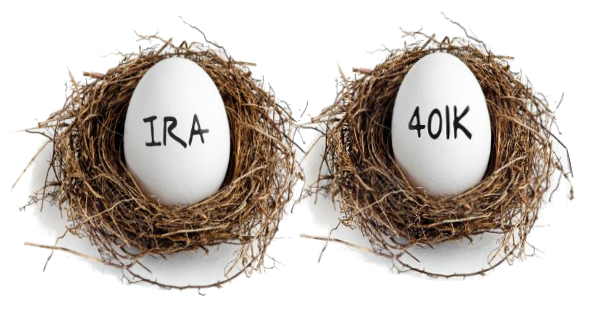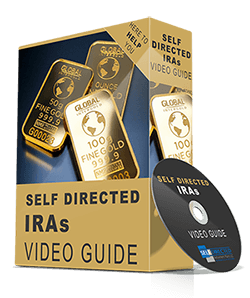Deciding between an IRA and a 401(k) can feel like picking a winner in a close competition. The truth is, the “best” option depends on your unique retirement goals. While a 401(k) offered through your employer is a fantastic savings tool, an IRA might offer additional benefits. Before you invest your hard-earned money, let’s explore the key differences between these two retirement accounts. We’ll also highlight the importance of consulting with a financial advisor as you chart your path to a secure retirement.
Whats the difference between 401K and IRA?
401(k)s and IRAs differ primarily in their origins: 401(k)s are provided by employers, while individuals independently establish IRAs through a broker or bank. IRAs generally present a wider array of investment choices, whereas 401(k)s permit larger yearly contributions.
If you are considering contributing to your retirement account and want to maximize your returns, then you should know the answers to these questions first. Both 401(k) and IRA are investment accounts designed to help you save money by allowing your investments to grow tax-deferred but you need to dive deeper into their differences to arrive at a profitable decision.
Is a 401K an IRA?
The short answer is No. A 401(k) and an IRA are two different retirement savings accounts with some key differences. Here’s a quick breakdown:
- 401(k): Offered by employers, contributions are made with pre-tax dollars reducing your taxable income. You may get matching funds from your employer.
- IRA: Individual account opened at a bank or brokerage firm. Contributions are made with after-tax dollars, but earnings grow tax-deferred.

Is 401K an IRA?
What is an IRA?
An IRA is an Individual Retirement savings account that offers pre-tax or after-tax advantages. Every IRA must have a custodian and the choice of investments available to you will greatly depend upon the custodian you choose.
There are three types of custodians. The first will help you establish a new self-directed IRA but your investment options are limited to what they have to sell. The second will allow you to invest in anything allowed by the IRS BUT you have to run everything through them and of course, that incurs continuing fees. The third is a passive custodian, they don’t have products to sell AND let you invest in any alternative investment without going through them.
How an IRA Works? Traditional vs. Roth
A 401(k) is administered by an employer but you can set up an IRA on your own and contribute to it. Depending upon your Modified Adjusted Gross Income, you are allowed to have both a 401 k and an IRA. If your current company does not offer a 401(k) or you are a freelancer, you have the capability of having your own personal 401 k and an IRA.
What is a 401(k) Retirement Plan? How a 401(k) Works?
It is an employer-sponsored retirement savings plan where eligible employees can contribute towards their retirement savings on either an after-tax or pretax basis. The employer offering a 401(k) may choose to make a matching contribution to the plan or add a profit-sharing feature.
The biggest benefit of investing in a 401(k) instead of an IRA is the high contribution limit.
401k vs IRA – Key Differences between Two Tax-Advantaged Options
While both 401(k) and IRA make great options for retirement savings, it is important to know the key differences between them to determine which best suits your unique situation:
| Eligibility | Anyone who is employed in an organization where the employer or sole proprietor offers a 401(k) plan | Anyone who is below the age of 70 ½ for Traditional IRA’s, not Roth, and has earned income can contribute to an individual retirement account. |
| Subjected Taxes | Contributions are tax deductible unless it is a Roth contribution.
Traditional distributions will be treated as ordinary income. Roth distributions are not taxed if the rules are met |
Contributions are tax deductible unless it is Roth IRA. Traditional distributions well be treated as ordinary income. Roth distributions are not taxed if the rules are met. |
| Flexibility | You cannot contribute to your 401(k) plan after the completion of employment. | Your 401(k) can be rolled over to an IRA and you can continue to invest. |
| Contribution Limits (Basic) | $23,500 | $7,000 |
| Catch-up Contribution Limits
(Age 50 and above) |
$7,500 | $1,000 |
The TRUTH: IRA vs 401Ks Explained (Which One Could Be Costing You MONEY)
Self-Directed 401k vs SEP IRA – Key Differences between Two
| Is a 401k | Is an IRA |
| Higher contribution levels | Lower Contribution Levels |
| PSP – Profit Sharing Plan | No Profit Sharing |
| No Custodial Fees | Annual Expensive Custodial Fees |
| Can accommodate spouses | Each spouse needs own IRA = 2 X Expenses |
| Has own EIN – can have its own checking account | Needs additional LLC expense to obtain checkbook control |
| Personal Loans allowed | No Personal Loans Allowed |
| No UBIT on leveraged Real Estate Investments | UBIT applies |
| Much better asset protection | Lesser asset protection |
| No income limitation for Trad Or Roth contributions | Income Limitations for contributions |
Roth IRA vs 401k – Key Differences between Two
| Contributions limited by Income | No Income Limitation’s |
| Both Spouses need separate IRA’s | Combines Spouses into one plan |
| Needs Underlying and expensive LLC to obtain checkbook control | Has Own EIN = Checkbook control |
| Attracts UBIT is using leverage for Real Estate Investments | No UBIT |
| No personal loans | Personal loans allowed for EACH |
Roth IRA vs 401k: Which is REALLY Better?
Roth 401k’s vs Roth IRA – Key Differences between Two
| Is a qualified pension plan | Is still an IRA |
| Can incorporate spouses | Each spouse needs own IRA |
| Can have checkbook control | Needs for checkbook control |
| Personal Loans Allowed | No personal loans allowed |
| Much higher contribution levels | Lower contribution levels |
| Contributions not affected by Income | Earn too much, no contributions |
| Profit sharing allowed | No profit sharing |
| No UBIT for leveraged Real Estate Investments | Expensive UBIT comes into play for leveraged R.E. Investments |
The Basic Difference between 401(k), Traditional IRA, Roth IRA, Solo 401k, SEP IRA and Roth 401k
| Type | Employer Sponsored. | Individual account. | Same as traditional IRA except the contributions aren’t tax-deductible. | A solo 401(k), also called an “individual 401(k),” is a great solution for the self-employed as well. The solo 401(k) offers both employee and employer contributions. | A simplified employee plan (SEP) IRA is a type of IRA that works well for the self-employed or the small business owner. | Solo 401(k) which has Roth Provisions built in such as Roth contributions and Internal Roth conversions. |
| Eligibility | If an Employer offers this; employees are eligible to join. | Anyone under age 70½ can contribute. | Must meet the income requirements. | Must have some type of earned self employed income | A business of any size, even self employed can establish a SEP | Must have some type of earned self employed income |
| Taxation | Growth is tax-deferred but withdrawals are taxed as normal income. | Tax-deferred growth. Pre-tax contributions are allowed if the account holder does meets the IRS requirements of 401 k accessibility. | The income is taxed before contributing to Roth IRA but all withdrawals are tax-free. Roth account has a five year vesting period and owner must be 59 1/2. | Normal Income Taxes are due upon distribution from the plan | Normal Income Taxes are due upon distribution from the IRA | No taxes are due on your withdrawals from a Roth 401(k) in retirement. |
| Contribution Thresholds | Participants have a total contribution limit of $70,000 and over 50 a catch up amount of $7,500 if 50 and older. | Up to $7,000 and an additional catch-up contribution of $1,000 for those over 50 years of age. | Same as a traditional IRA. | Participants have a total contribution limit of $70,000 and over 50 a catch up amount of $7,500 if 50 and older. | The maximum contribution for calendar year 2025 is $70,000. | The Roth 401(k) contribution limit in 2025 is $23,500, but those age 50 or over can also make a catch-up contribution of $7,500. |
| RMD | Withdrawals must begin at age 73. | Withdrawals must begin at age 73. | Not required. The account can be passed on to the heirs. | RMD’s become due April of the year after the person turns 73 | RMD’s become due April the year after the person turns 73 | You must begin taking withdrawals or required minimum distributions (RMDs) at age 73. However there is a way to avoid RMD’s. |
| Investment Options | Options limited to funds available in the plan. | A wide variety of investment options including stocks and bonds. | Stocks, bonds, ETFs, real estate, mixed-asset funds, index funds and more. | Certain Plans allow for in house investments only – a true self directed plan can invest in anything that is legal | Depending upon the custodian, either restricted investment options or if self directed, can invest in anything legal | When it comes to the Roth 401(k), you’re limited to whatever is in the investment menu your employer offers. Often, this includes a number of target-date funds and other types of mutual funds. |
Making a Sound Choice
If you employer is matching your contribution in a 401(k) plan, you should make the most of the free employer money. You may want to switch to a Roth IRA if your 401(k) does not offer low-fee funds and charges high administration fees. If you are looking for greater investment flexibility, an IRA will bring you the freedom to diversify your retirement savings. To wrap it up, if your income is high, you may benefit from a 401(k) as it allows you to save significantly on your taxable income. However, it is also nice to have a Roth IRA as there are no required minimum distributions and all your withdrawals are tax-free. So, as far as possible you should strive to invest in both 401(k) and Roth IRA if you meet the eligibility requirements.
One Last Thing on Your Retirement Savings
Retire from work, not retirement savings. If you are eligible for both 401(k) and IRA, save as much as you can while keeping within contribution limits. If you are fortunate to have a 401 k plan, contribute and take advantage of any “match”. Consider maxing out an IRA and then go back to funding the 401 k as much as you can.



